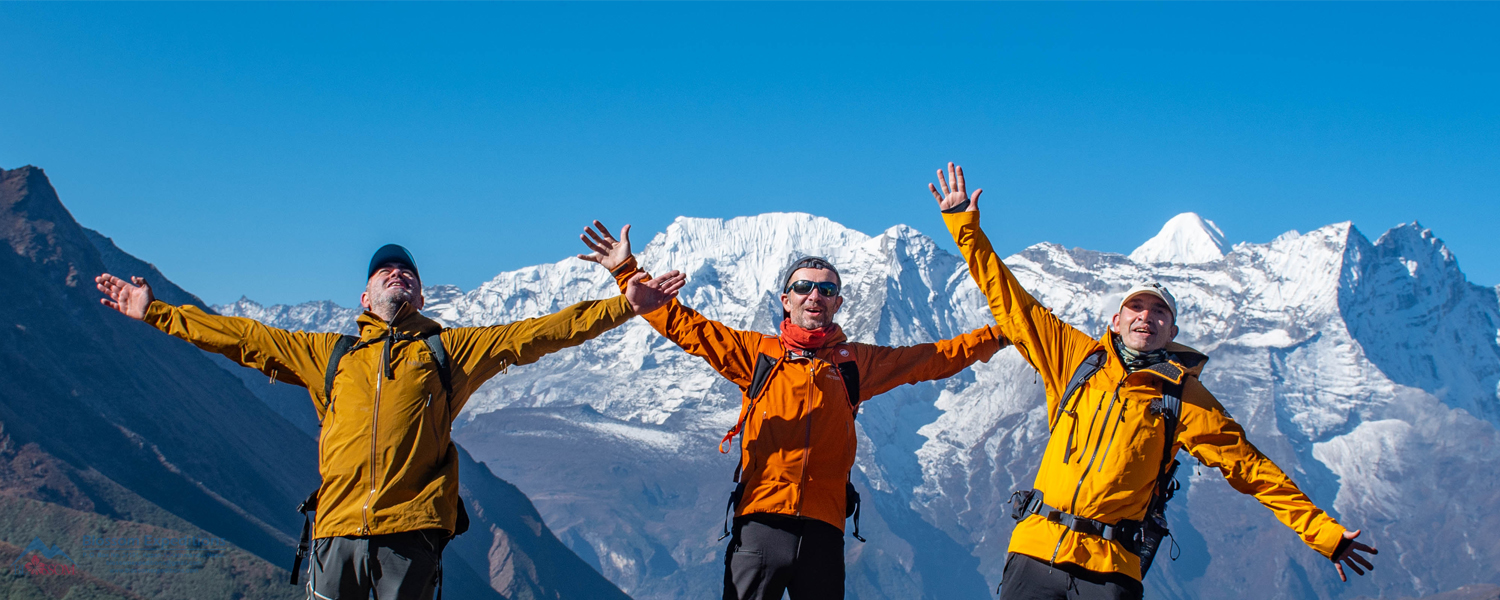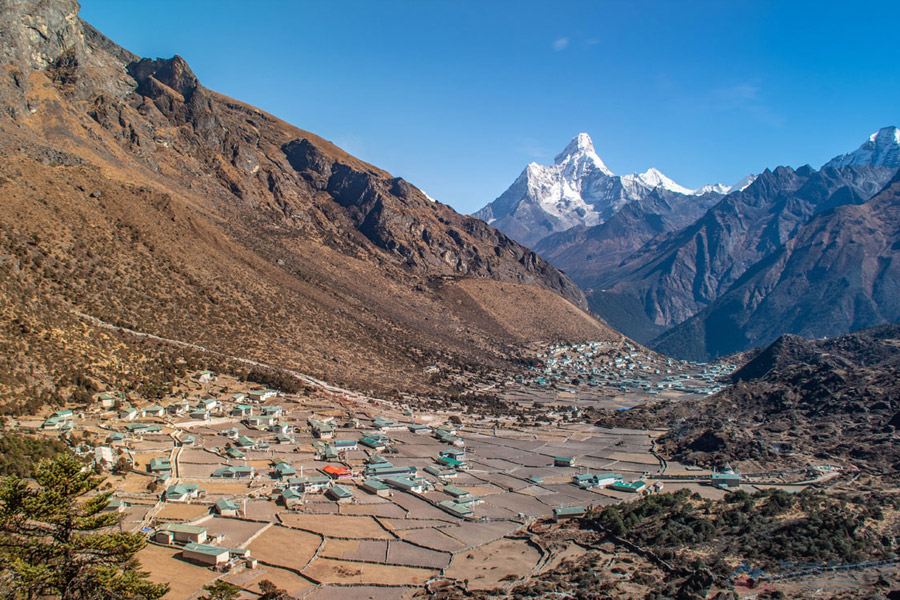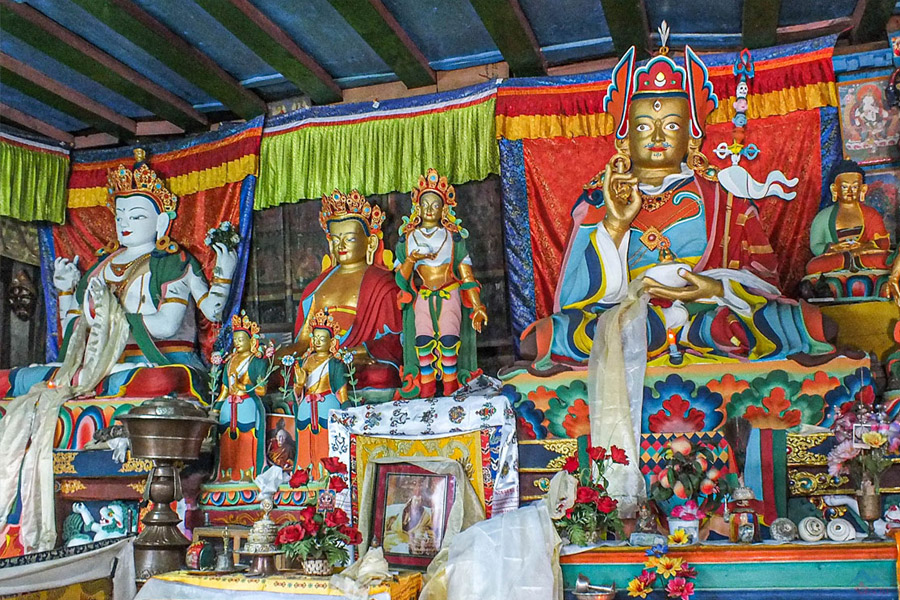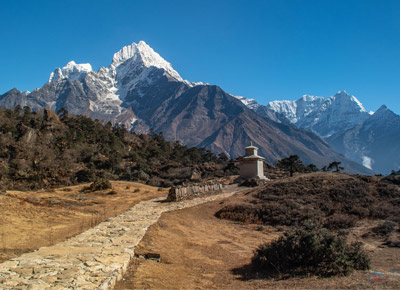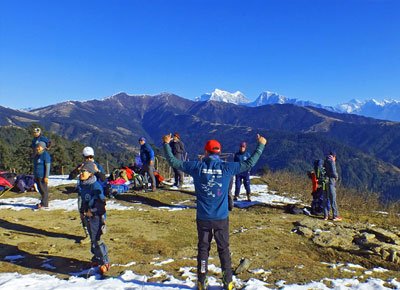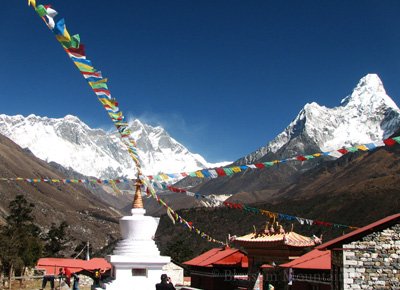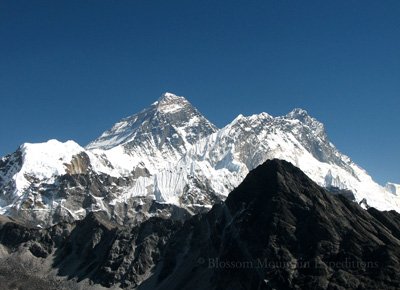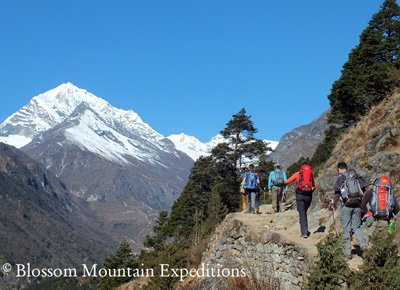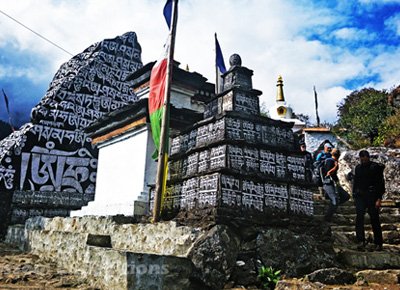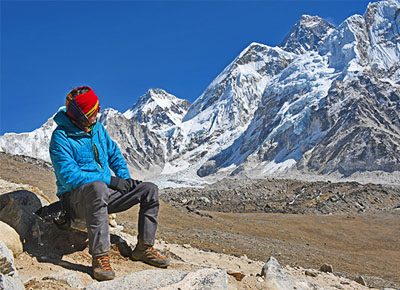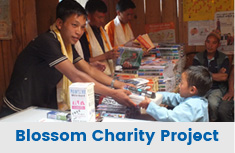Trip Facts
- Total Duration 15 Days
- Trip Grade Mild to Moderate
- Max Altitude 4600m.
- Start From Lukla
- End From Lukla
- Min Size 2 pax
- Max Size 10 pax
- Trip Mode Fully Tea House
- Accommodation Fully Tea House
- Best Season: Mid Sep to Dec and March to May
Trip Highlights
- Breathtaking Views: Experience jaw-dropping vistas of the Himalayas, including iconic peaks like Mount Everest, Lhotse, Nuptse, and Ama Dablam.
- Impressive Cultural Encounter: Interact closely with the renowned Sherpa people of the Khumbu region, gaining insights into their lives and unique culture amidst the harsh terrain of the Everest region.
- Buddhist Monastery: Explore the ancient Buddhist Monasteries, a significant religious site in the Everest region, nestled within the serene surroundings.
- Day Excursion: This unforgettable day excursion offers panoramic views of the majestic Himalayas and valleys, making it a highlight of the trek.
The Everest Grand Panorama Trek is a blend of moderate trekking with a close-up of Buddhist culture and the unforgettable trekking experience in the Everest Region of Nepal. It features magnificent views of the Himalayas, including Mount Everest, and other peaks such as Lhotse, Nuptse, and Ama Dablam. The trek starts with a short flight to Lukla, a beautiful town nestled on the mountainside. From Lukla, you trek to Namche Bazaar, the major town in the Everest Area.
At Namche Bazaar, you get an opportunity to meet with the famous Sherpa folks from the Khumbu Region. Their life stories are well known in the tough surroundings of the Himalayan region and their authentic culture, you will now be able to observe their life up close as you travel to those areas. Namche Bazaar is a great place to adapt to the high altitude before continuing your journey.
Following Namche, you will get to Tengboche, a beautiful village, known for its famous monastery. The Tengboche Monastery is the main religious center in the entire Khumbu region. On the following day, hike to View Point, which offers stunning views of the Himalayas. The View Point is the highlight of the trek, and it is a truly unforgettable experience.
You resume your steps gently to Khumjung (3770m) village. Khumjung is an authentic Sherpa community with a picturesque old Buddhist Monastery. The next day, hike to an amazing Hillary viewpoint for an incredible view of both Thame Valley and Khumbu Valley, and a grand panoramic view of the mountains, including Mount Everest. Then, return through Phakding to Lukla before flying back to Kathmandu. In Kathmandu, visit famous places like Swayambhunath, Boudhanath, Pashupatinath, and the three Durbar squares.
The Everest Grand Panorama Trekking offers stunning views of the Himalayas without going to higher altitudes and crossing the high passes. If you are looking for a moderately challenging trek that will take you to some of the most beautiful places in Nepal, the Everest Grand Panorama Trek will be a great option.
Trip Itinerary
| Days | Program |
| 1 | Arrive in Kathmandu and transfer to hotel |
| 2 | Preparation and Afternoon Drive to Manthali |
| 3 | Fly to Lukla early morning (2800m) and trek to Phakding-2645m. 3-4 hours |
| 4 | Trek to Namche Bazaar-3440m. 6-7 hours |
| 5 | Acclimatization day at Namche and hike to Thamo and back to Namche Bazar |
| 6 | Trek to Tyangboche-3870m. 5-6 hours |
| 7 | Day hike to viewpoint (approximately 4500m) return to Tyengboche and Trek Pangboche-3930m. 6-7 hours |
| 8 | Day hike to Ama Dablam Base Camp (4600m) and return to Pangboche. 5-6 hours |
| 9 | Trek to Phorche-3810m. 3-4 hours |
| 10 | Trek to Khumjung-3770m. 4-5 hours |
| 11 | Hike to Hillary viewpoint and Trek to Jorsalle-2835m. 6-7 hours |
| 12 | Trek to Lukla-2800m. 5-6 hours |
| 13 | Fly to Manthali and drive to Kathmandu |
| 14 | Sightseeing (Swayambhunath Stupa, PatanDabar Square, Pashupatinath Temple, Boudhanath Stupa) |
| 15 | Departure to Home |
Note: During the peak season, Lukla flights operate from Manthali Airport, Ramechhap, which is located 135 km east of Kathmandu city center. The drive takes approximately 4 hours. To catch the flight, we have to either arrive there a day before or depart from Kathmandu as early as 2 or 3 am.
Trip Cost
- Trip Cost per person USD2075
- Single Supplement USD100
- Trip Deposit USD500
(Single Supplement Kathmandu only)
What's Included
- Three-night Accommodations in Kathmandu at three-star standard hotel including Breakfast
- Three-time food (breakfast, Lunch, and Dinner) with Tea or Coffee during the Trekking
- Accommodation during the Trek on a sharing basis (common room)
- Guide, assistant guide, and porter’s wages, food, accommodation, and insurance on Trekking.
- Airfare both ways KTM/Lukla/KTM Including Guide
- National Park and TIMS cards Fee
- Transfer from Kathmandu-Manthali-Kathmandu by private Car/Jeep/Van/Bus
- Airport Transfer
- Tour Guide and transfer for city sightseeing in Kathmandu
- Entrance fee for city sightseeing
- Applicable all the Government Tax
What's Excludes
- Cold and hard drink and water
- Food in KTM
- Hot Drinks besides breakfast, Lunch and Dinner
- Travel insurance for emergency evacuation and personal medical expenses
- Any donation along the trail and anything that is not mentioned above
- Staff Welfare (Tips)
Trip Highlights
- Breathtaking Views: Experience jaw-dropping vistas of the Himalayas, including iconic peaks like Mount Everest, Lhotse, Nuptse, and Ama Dablam.
- Impressive Cultural Encounter: Interact closely with the renowned Sherpa people of the Khumbu region, gaining insights into their lives and unique culture amidst the harsh terrain of the Everest region.
- Buddhist Monastery: Explore the ancient Buddhist Monasteries, a significant religious site in the Everest region, nestled within the serene surroundings.
- Day Excursion: This unforgettable day excursion offers panoramic views of the majestic Himalayas and valleys, making it a highlight of the trek.

